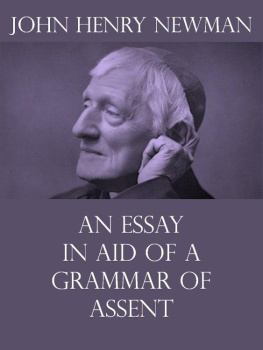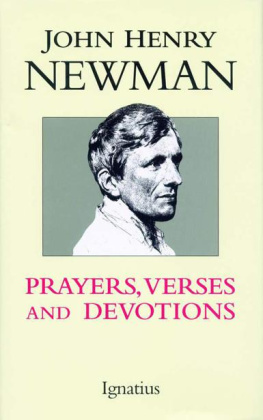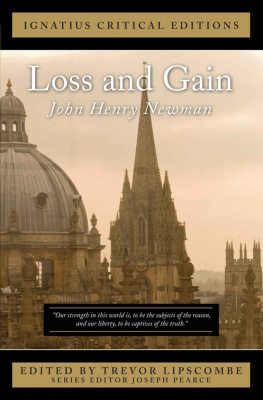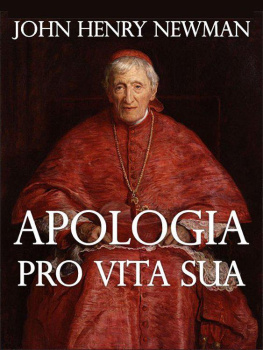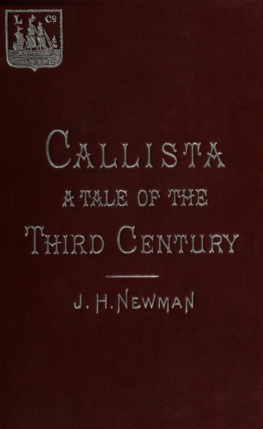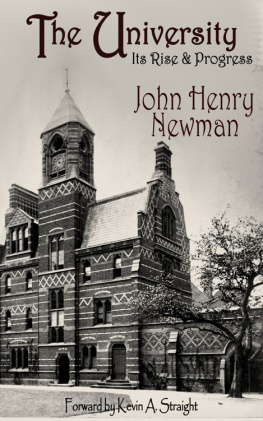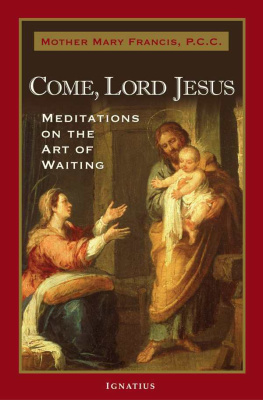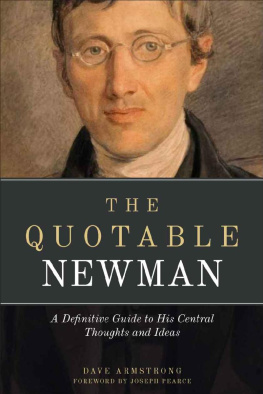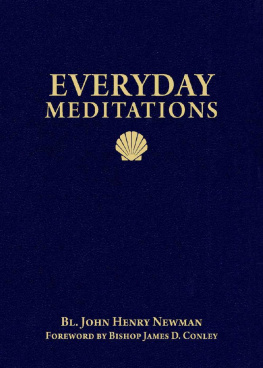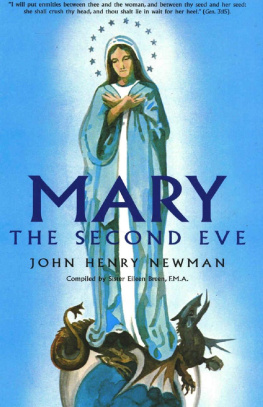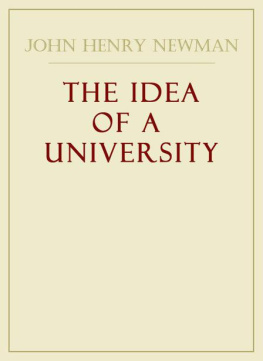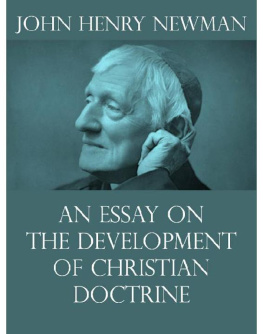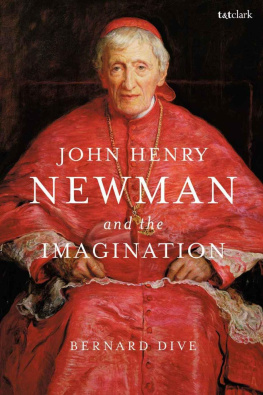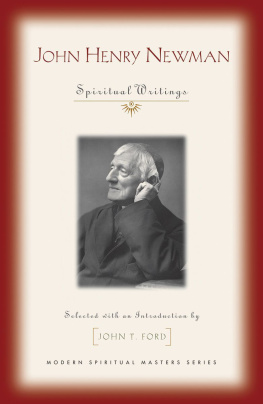John Henry Newman - Meditations on Mary, Our Mother
Here you can read online John Henry Newman - Meditations on Mary, Our Mother full text of the book (entire story) in english for free. Download pdf and epub, get meaning, cover and reviews about this ebook. year: 2019, publisher: TAN Books, genre: Science. Description of the work, (preface) as well as reviews are available. Best literature library LitArk.com created for fans of good reading and offers a wide selection of genres:
Romance novel
Science fiction
Adventure
Detective
Science
History
Home and family
Prose
Art
Politics
Computer
Non-fiction
Religion
Business
Children
Humor
Choose a favorite category and find really read worthwhile books. Enjoy immersion in the world of imagination, feel the emotions of the characters or learn something new for yourself, make an fascinating discovery.

- Book:Meditations on Mary, Our Mother
- Author:
- Publisher:TAN Books
- Genre:
- Year:2019
- Rating:5 / 5
- Favourites:Add to favourites
- Your mark:
- 100
- 1
- 2
- 3
- 4
- 5
Meditations on Mary, Our Mother: summary, description and annotation
We offer to read an annotation, description, summary or preface (depends on what the author of the book "Meditations on Mary, Our Mother" wrote himself). If you haven't found the necessary information about the book — write in the comments, we will try to find it.
Meditations on Mary, Our Mother — read online for free the complete book (whole text) full work
Below is the text of the book, divided by pages. System saving the place of the last page read, allows you to conveniently read the book "Meditations on Mary, Our Mother" online for free, without having to search again every time where you left off. Put a bookmark, and you can go to the page where you finished reading at any time.
Font size:
Interval:
Bookmark:
St. John Henry Cardinal Newman

Meditations on Mary, Our Mother by St. John Henry Cardinal Newman
2019 TAN Books
All rights reserved. With the exception of short excerpts used in critical review, no part of this work may be reproduced, transmitted, or stored in any form whatsoever, without the prior written permission of the publisher.
This work has been taken, edited, and arranged from the following works of Cardinal Newman: Essay on the Development of Doctrine, Difficulties of Anglicans, Parochial and Plain Sermons, and Meditations and Devotions of Cardinal Newman, published by Longmans, Green and Company, between 1900-1909, which are in the public domain. All editing arrangement TAN books. All rights reserved.
Unless otherwise noted, the editors use of the Douay-Rheims version for biblical quotations has been retained. Typography and changes in this edition are the property of TAN Books and may not be reproduced, in whole or in part, without written permission of the publisher.
Cover & interior design by www.davidferrisdesign.com
Cover image: The Maesta, 1308-11 (tempera on panel), Duccio di Buoninsegna, (c.1278-1318) / Italian, Museo dellOpera del Duomo, Siena, Italy/Bridgeman Images.
Cover & interior image: Cardinal Newman, from a photograph by Mr H.J. Whitlock, Look and Learn / Elgar Collection / Bridgeman Images.
Interior image: Mother of Perpetual Help, by Immaculate @ Shutterstock.com
LCCN: 2019950687
ISBN: 978-1-5051-1643-4
Published in the United States by
TAN Books
PO Box 410487
Charlotte, NC 28241
www.TANBooks.com
Printed in the United States of America
St. John Henry Cardinal Newman

TAN Books
Gastonia, North Carolina
TABLE OF CONTENTS
S t. John Henry Cardinal Newmans conversion to the Catholic Church in 1845 needs little by way of introduction. Most Catholics who know anything at all about Newman are familiar with his journey from Anglicanism to Rome. What may surprise them is the key role that devotion to the Blessed Virgin Mary played in that conversion.
Apart from the Papacy, devotion to Mary is perhaps the greatest stumbling block for the majority of Protestants. Yet, Newman had already developed a devotion to Mary and a defense of some Catholic doctrines on the subject even while he was still a Protestant. This requires some context.
In Newmans day, the liberal movement in theology was particularly strong. This liberalism rejected dogmatic principles as the basis of religion because they were independent of individual judgment. For early 19th century liberalism, the individual along with his interpretations and experiences was the standard of judgment in religion. In the early 20th century, this system of thought made its assault on the Catholic world, and received a new name: Modernism.
Nothing could be further from Cardinal Newmans thought, both as an Anglican and later in life as a Catholic. Newmans religion, as an Anglican, was based on the principle of dogma, that there are revealed truths to which the believer must adhere. These were the Holy Trinity, the Incarnation, Predestination, and the Lutheran Apprehension of Christ (justification by faith). As time went on, Newman rejected the last, but he would remain steadfast with the first three throughout his life, even as a Catholic.
His acceptance of the Incarnation is the most important for his developing views on Mary. Christ became incarnate in time through a womanwho was this woman? Could she really be an insignificant figure? Moreover, as a student of history, Newman was well aware of early Christological controversies and early heresies in regard to the Incarnation. He was able to see clearly that they all received their death-blow when the Council of Ephesus had declared her to be TheotokosMother of God. The contrast in the Fathers between the old Eve and Mary as the new Eve made the matter quite clear, and served as a foundation for his developing and accepting further Marian doctrine, although he was still a Protestant. He even had no fear of proclaiming, as an Anglican minister, to his Anglican audience:
Who can estimate the holiness and perfection of her, who was chosen to be the Mother of Christ? If to him that hath, more is given, and holiness and Divine favor go together (and this we are expressly told), what must have been the transcendent purity of her, whom the Creator Spirit condescended to overshadow with His miraculous presence? What must have been her gifts, who was chosen to be the only near earthly relative of the Son of God, the only one whom He was bound by nature to revere and look up to; the one appointed to train and educate Him, to instruct Him day by day, as He grew in wisdom and in stature? This contemplation runs to a higher subject, did we dare follow it; for what, think you, was the sanctified state of that human nature, of which God formed His sinless Son; ? (Parochial and Plain Sermons, vol. ii, Sermon 12)
As his Marian doctrine and devotion grew, Newman ran up against a great road-block. In general, as the Tractarian controversy raged, and he was dissatisfied with the rejection of what he saw as historic Christianity by his own Church. He began to have a greater love, even longing for Rome, the mother of English Christianity. He felt, however, that whereas he had a logical, dogmatic based view of the Blessed Virgin Mary, Catholics went too far and said too much. Time, reading and prayer, however, would convince him otherwise, and he was able to say in his letter to the Anglo-Catholic Dr. Pusey (who had many of the same objections Newman once had):
Only this I know full well now, and did not know then, that the Catholic Church allows no image of any sort, material or immaterial, no dogmatic symbol, no rite, no sacrament, no Saint, not even the Blessed Virgin herself, to come between the soul and its Creator. It is face to face, solus cum solo, in all matters between man and his God. He alone creates; He alone has redeemed; before His awful eyes we go in death; in the vision of Him is our eternal beatitude.
Thus, Newmans journey to the Church can said to have been guided by Our Lady, toward the kindly light which he was to rest in.
In honor of his canonization, this present volume draws together Newmans Marian writings into an anthology, and organizes them topically. We have drawn both from works that are doctrinal and apologetic, as well as devotional meditations, so as to show both sides of Newmans character. On the one hand, his profoundly logical, deep, and intellectual bearing, and on the other, the profound love that permeated his heart. Together, they show the great depths of Marian doctrine from the Churchs treasury with which Newman has so powerfully permeated his own pages. In some places we have made minor edits for archaic language, as well as to tailor the readings for the purpose of this anthology.
Gastonia, NC
Holy the womb that bore him,
Holy the breasts that fed,
But holier still the royal heart
That in His passion bled.

MOTHER OF GOD
MAGNIFY THE LORD
Font size:
Interval:
Bookmark:
Similar books «Meditations on Mary, Our Mother»
Look at similar books to Meditations on Mary, Our Mother. We have selected literature similar in name and meaning in the hope of providing readers with more options to find new, interesting, not yet read works.
Discussion, reviews of the book Meditations on Mary, Our Mother and just readers' own opinions. Leave your comments, write what you think about the work, its meaning or the main characters. Specify what exactly you liked and what you didn't like, and why you think so.

